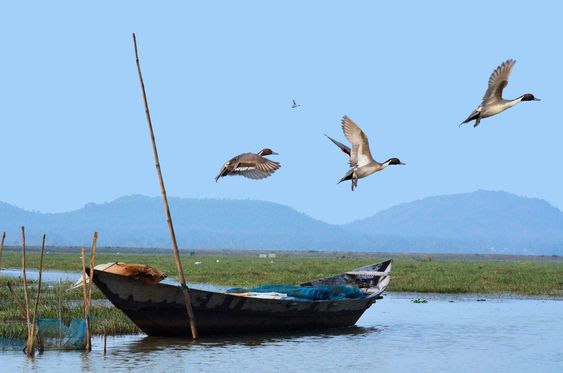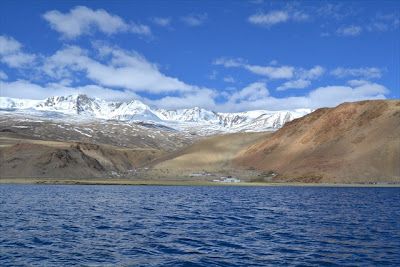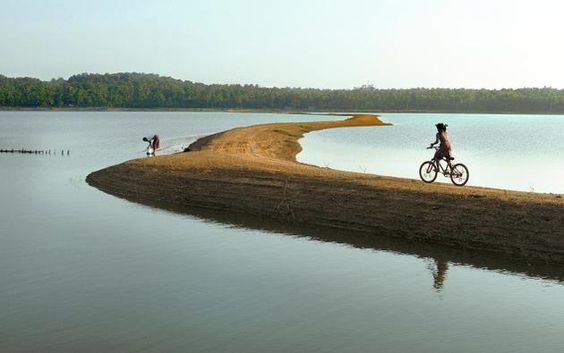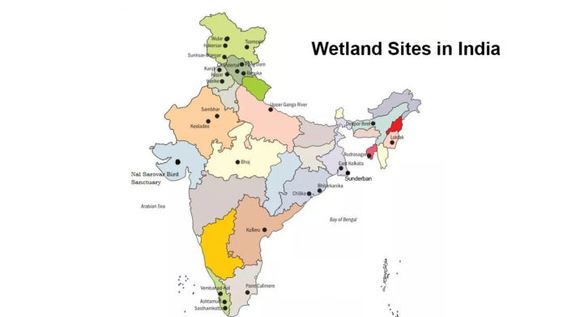
The Ramsar direction has been received by part governments all in all, and progressively it delivers itself to the urgent jobs of different divisions past “nature” or “water” areas. It is therefore significant that these Handbooks ought to be utilized by every one of whose activities may profit by or sway upon the insightful utilization of wetlands. However, today in this article below we are going to discuss environmental policy and associated schemes introduced for wetlands
What Does It Mean By Wetlands?
Table of Contents

Ramsar Convention on the Wetlands of 1971 describes wetlands as – “Areas of fen, marsh, water or peatland, whether artificial or natural, temporary or permanent, with water that is flowing or static, fresh, salt or brackish, together with zones of marine water the profundity of which at little tide doesn’t exceed 6 meters.”
In basic terms, the wetlands are a land zone that is soaked with water, either seasonally or permanently. This description brings lakes, ponds, estuarine, creeks, reservoirs, mangroves as well as many other more water bodies under the realm of wetlands.
Additionally, wetlands are also categorized into estuarine (together with deltas, mangrove swamps, and tidal marshes), marine (coastal wetlands), lacustrine (lakes), Palestine (‘marshy’– bogs, marshes, and swamps), and riverine (along streams and rivers) on the basis of their ecological, geological, and hydrological characteristics.
Why Are The Wetlands Significant?

- Around half of the world’s wetlands are evaluated to as of now have vanished worldwide in the course of the most recent hundred years!
- Wetlands are one of the most gainful biological systems in the world! Some consider them the Kidneys of the planet on account of their vitality dissemination and sanitization characteristics.
- India has lost as much as 38% of its wetlands in only 10 years between 1991-2001 (SACON)
- Thousand years of Ecosystem Assessment gauges that wetlands spread 7% of the world’s surface and convey 45% of the world’s regular efficiency and biological system administrations.
- The advantages of these are evaluated at $20 trillion every year! (Source)
- Regardless of these advantages, wetlands are the principal focus of human impedance and are among the most undermined of every single characteristic environment.
- The ‘full estimation’ of biological system elements of Wetlands is overlooked in policy-production, plans and corporate assessments of improvement ventures
Environmental Policy And Associated Schemes Introduced For Wetlands?

All wetlands in India are layout over 29 States and 9 Union Territories (UT) starting from the Wular lake situated in Srinagar, Loktak lake (lone floating National Park in the world) situated in Manipur, Ashtamudi backwaters lake situated in Kerala, as well as Nalsarovar situated in Gujarat.
As far as numbers Uttar Pradesh (1.2 lakhs), West Bengal (1.47 lakhs), are the 2 States where the wetlands are over 1 lakh. These States are trailed by Madhya Pradesh and Odisha that have 62 and 78 thousand wetlands separately.
Regarding the extent of the land region, Mizoram has the least extent (0.66 percent) as well as Gujarat has the most noteworthy extent (17.5 percent) of the zone under wetlands.
Among Union Territories in India, Chandigarh has the smallest amount share (3 percent) and Lakshadweep has the uppermost quantity (around 96 percent) of the geographical part under the wetlands. So here are some of the most important environmental policy and associated schemes introduced for wetlands
Ramsar Convention:
The convention is termed after the Ramsar in Iran where the convention was approved in the year 1971. This convention is designed for expanding the national activity as well as global collaboration for the protection & insightful utilization of the wetlands as well as their assets.
India is a signatory to the convention. Up until this point, 26-locales have been assigned as Wetlands of International Importance (Ramsar Sites) and 6 more are under the way toward being assigned.
National Plan for Conservation of Aquatic Ecosystems (NPCA):
It was uncovered in 2015 to accommodate strategy structure and backing to State Governments for coordinated administration of wetlands. This activity was propelled by blending two separate Centrally Sponsored Schemes (CSS), specifically the National Wetlands Conservation Program (NWCP) and the National Lake Conservation Plan (NLCP).
The Central Wetlands (Conservation & Management) Rules:
They were told without precedent for 2010 for better administration and guidelines of wetlands the nation over. It saw the development of the Central Wetlands Regulatory Authority (CWRA) whose term finished on 31 March 2015 and it wasn’t reconstituted from that point forward.
National Wetland Conservation Programme (NWCP):
The National Wetland Conservation Programme (NWCP) was launched in the year 1985 to permit conservation as well as a wise use of the wetlands in the nation so they can prevent their further filth.
National Environment Policy 2006:
Perceiving the significance of the wetlands, it calls for building up a national stock of such wetlands as well as executing a wide range of arrangements & plans for the wetland preservation as well as their Environmental Impact Assessment (EIA).
Capacity Building:
So as to expand the limit of wetland supervisors, up-degree of the current Wetland Research and Training Center of Chilika Development Authority at Barkul, Odisha into the National Capacity Development Center for the Wetlands is getting looked at.
Conclusion:
The environmental policy and associated schemes introduced for wetlands is a key element conceived in the usage of the insightful use idea of the Ramsar Convention.
Be that as it may, characterizing, creating, and executing environmental policy and associated schemes introduced for wetlands that advance wetland preservation and the executives stay a slippery objective for some Contracting Parties of the Convention on Wetlands (Ramsar, Iran, 1971).
To help these interests, the creators have reacted to Recommendation 6.9 embraced by the sixth Conference of the Contracting Parties in March 1996, in Brisbane, Australia. This Recommendation called for collaboration by Contracting Parties, the Ramsar Bureau, and different supporters of setting up a “system report” on environmental policy and associated schemes introduced for wetlands.
Recommended Articles:-
- Schemes And Policies For Tribal People!
- Pradhan Mantri Kaushal Vikas Yojana Guidelines & Features
- Swadesh Darshan Scheme: Know In Details About The Scheme
- Standup India Scheme Features, Eligibility & Related Details
- Know About Some Important Government Schemes For Farmers
- Rajiv Arogya Bhagya (Rab) Scheme: Know In Details About It